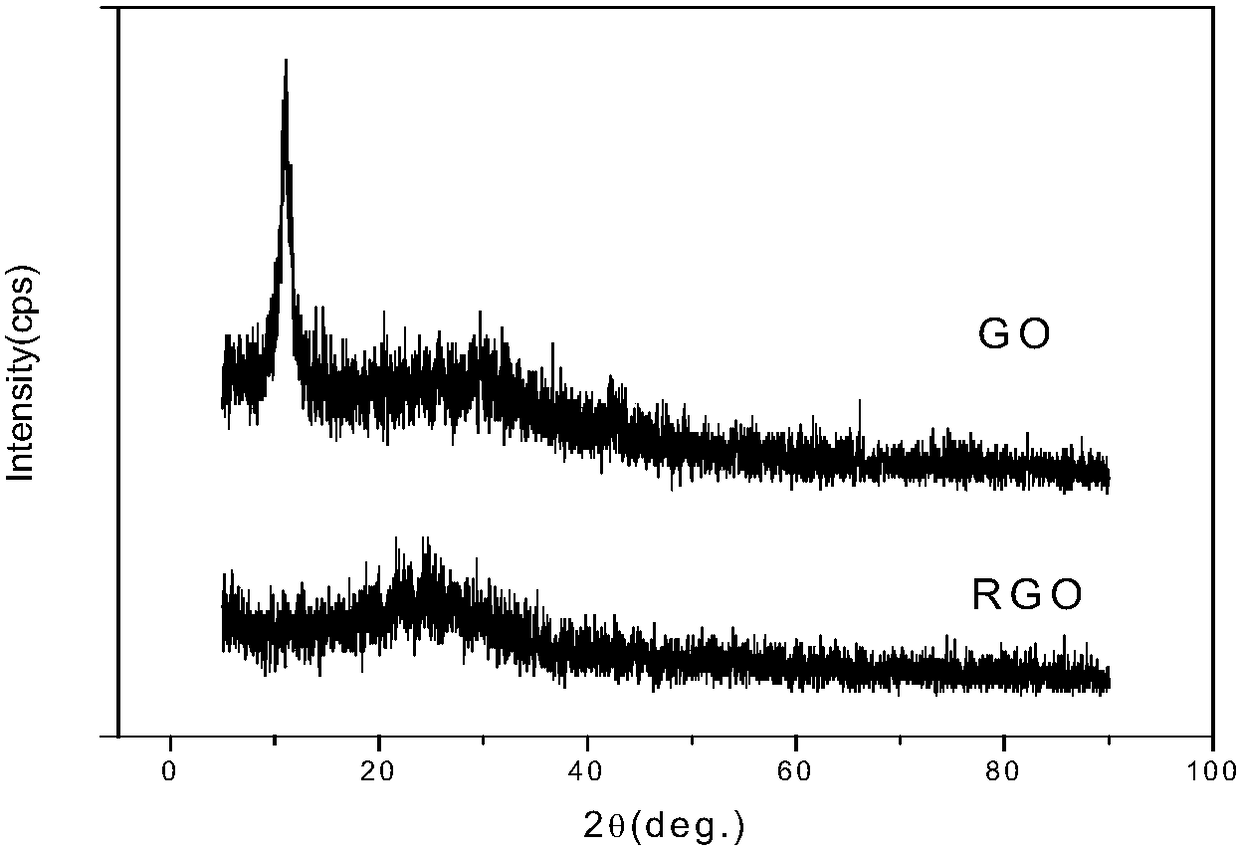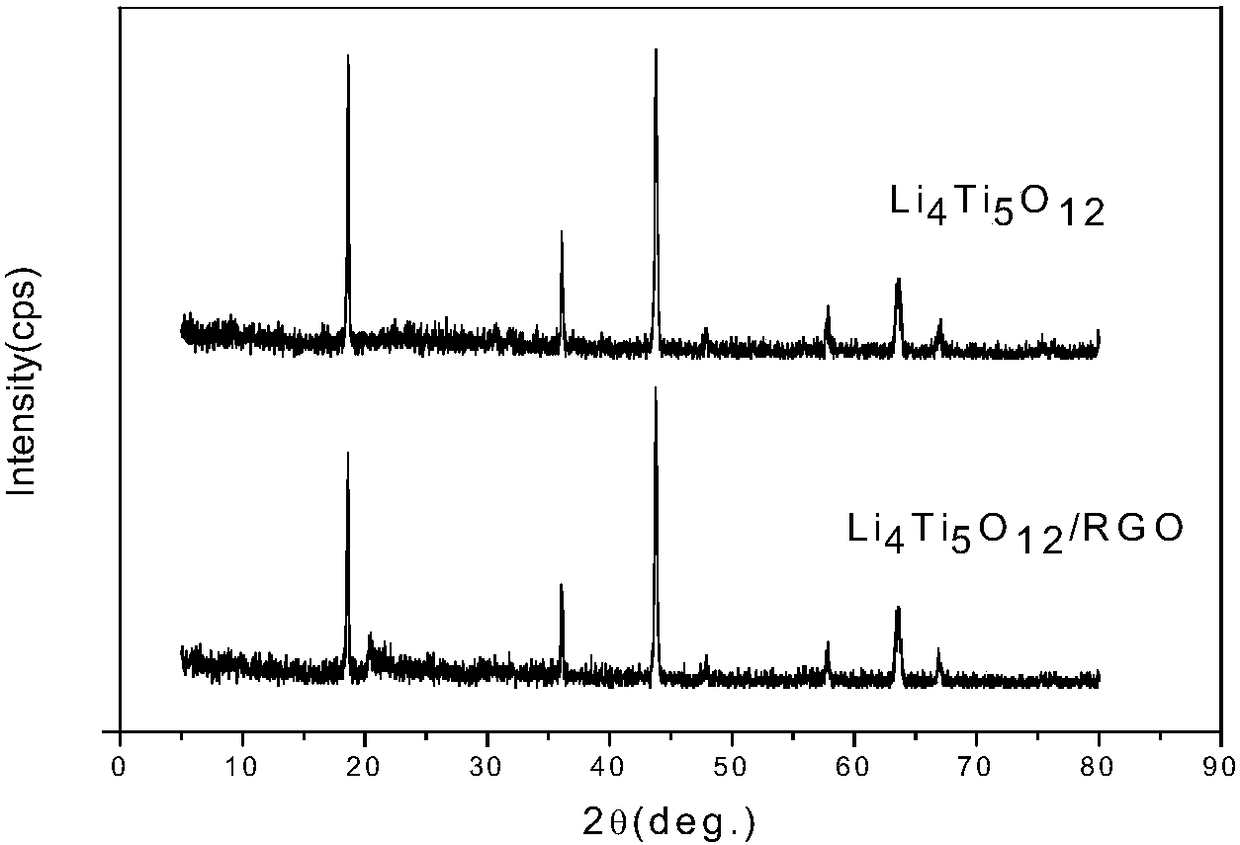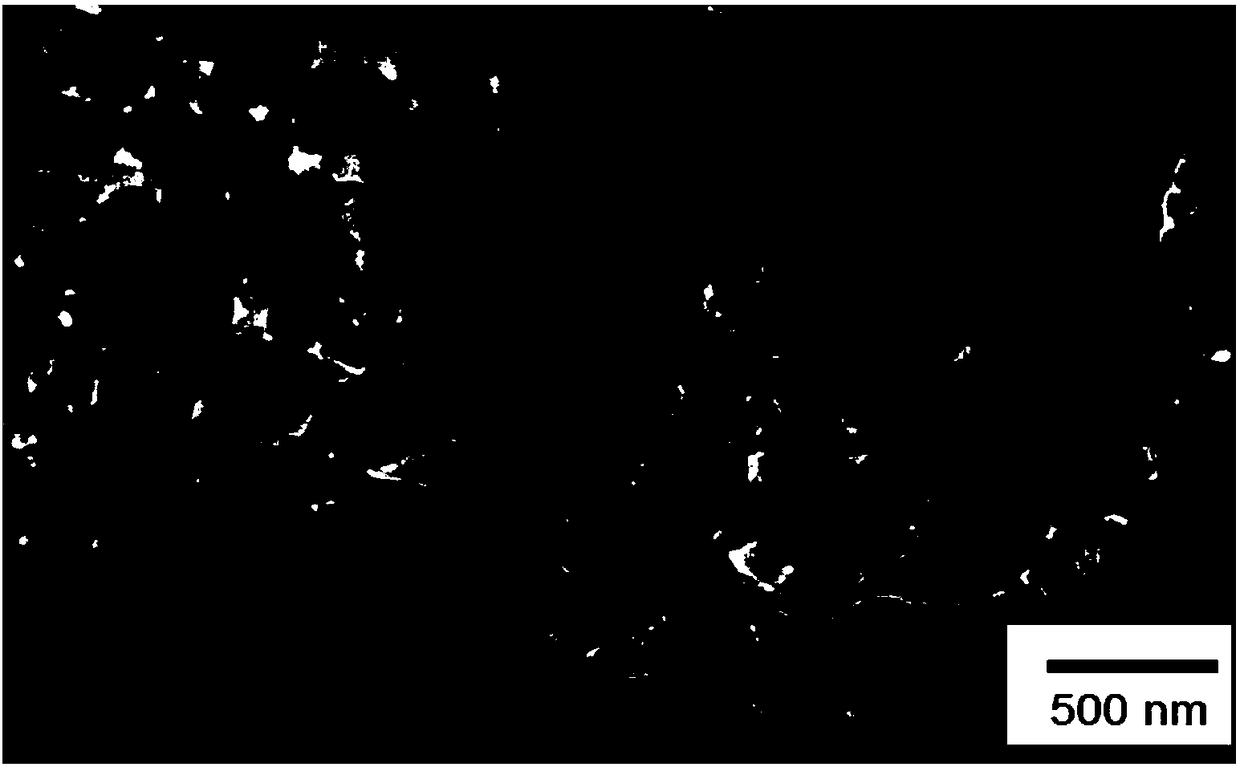A kind of negative electrode material of lithium ion battery and preparation method thereof
A lithium-ion battery and negative electrode material technology, which is applied to battery electrodes, circuits, electrical components, etc., to achieve large capacity, excellent electrochemical performance, and improved capacity and charge-discharge rate.
- Summary
- Abstract
- Description
- Claims
- Application Information
AI Technical Summary
Problems solved by technology
Method used
Image
Examples
Embodiment 1
[0029] Embodiment 1 A kind of negative electrode material of lithium ion battery
[0030] The preparation method is as follows
[0031] 1) Mix 65-70mL of concentrated H 2 SO 4 Place in an ice-water bath, add 1.9-2.2g of graphite and 1.5-1.7g of NaNO under stirring at 100-240r / min 3 , after stirring evenly, add 8 ~ 10g KMnO 4 , reacted for 15 to 30 minutes, and added H after the reaction 2 o 2 Until the solution turns bright yellow, centrifuge and wash to obtain graphene oxide (GO) for use.
[0032] 2) Ti(OC 4 h 9 ) 4 The solution and ethanol were first mixed in a molar ratio of 1:50 to form solution A. Lithium acetate was dissolved in deionized water as solution B. Under the condition of vigorous stirring, solution B was slowly added dropwise into solution A according to stoichiometric amount. React at 90°C for 1h. Subsequent drying at 140 °C for 5 h removed the remaining organic matter and water and produced a white precursor.
[0033] 3) Calcining the white prec...
Embodiment 2
[0037] Embodiment 2 A kind of negative electrode material of lithium ion battery
[0038] The preparation method is as follows
[0039] 1) The preparation of graphene oxide (GO) is the same as step 1) in Example 1.
[0040] 2) Ti(OC 4 h 9 ) 4 The solution and ethanol are first mixed with a molar ratio of 1:47, which is solution A. Lithium acetate was dissolved in deionized water as solution B. Under the condition of vigorous stirring, solution B was slowly added dropwise into solution A according to stoichiometric amount. React at 100°C for 1 h. Subsequent drying at 140 °C for 5 h removed the remaining organic matter and water and produced a white precursor.
[0041] 3) Calcining the white precursor in a muffle furnace at a temperature of 700° C. for 8 hours to obtain spherical lithium titanate.
[0042] 4) Dissolve 3.15 g of spherical lithium titanate (LTO) in 35 ml of deionized water, mix it with 0.0200 g of graphene oxide, ultrasonicate for 30 min, then add 0.63 g o...
Embodiment 3
[0044] Embodiment 3 A kind of negative electrode material of lithium ion battery
[0045] The preparation method is as follows:
[0046] 1) The preparation of graphene oxide (GO) is the same as step 1) in Example 1.
[0047] 2) Ti(OC 4 h 9 ) 4 The solution and ethanol are first mixed with a molar ratio of 1:46, which is solution A. Lithium acetate was dissolved in deionized water as solution B. Under the condition of vigorous stirring, solution B was slowly added dropwise into solution A according to stoichiometric amount. React at 90°C for 2h. Subsequent drying at 140 °C for 5 h removed the remaining organic matter and water and produced a white precursor.
[0048] 3) Calcining the white precursor in a muffle furnace at a temperature of 680° C. for 7.5 hours to obtain spherical lithium titanate.
[0049] 4) Dissolve 3.55g of spherical lithium titanate (LTO) in 35ml of deionized water, mix it with 0.0245g of graphene oxide, ultrasonicate for 30min, then add 0.65g of gl...
PUM
 Login to View More
Login to View More Abstract
Description
Claims
Application Information
 Login to View More
Login to View More - R&D
- Intellectual Property
- Life Sciences
- Materials
- Tech Scout
- Unparalleled Data Quality
- Higher Quality Content
- 60% Fewer Hallucinations
Browse by: Latest US Patents, China's latest patents, Technical Efficacy Thesaurus, Application Domain, Technology Topic, Popular Technical Reports.
© 2025 PatSnap. All rights reserved.Legal|Privacy policy|Modern Slavery Act Transparency Statement|Sitemap|About US| Contact US: help@patsnap.com



